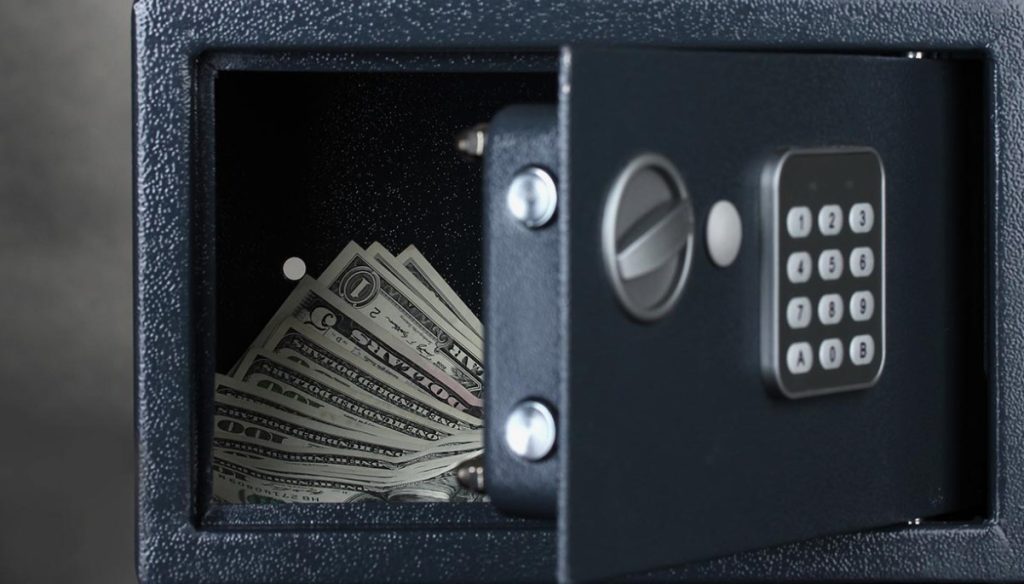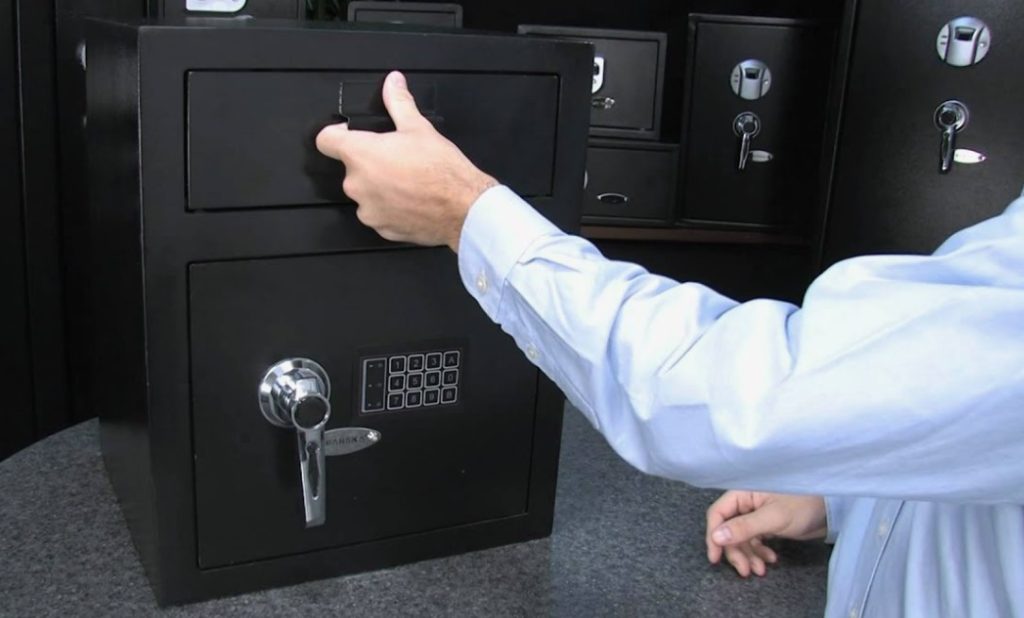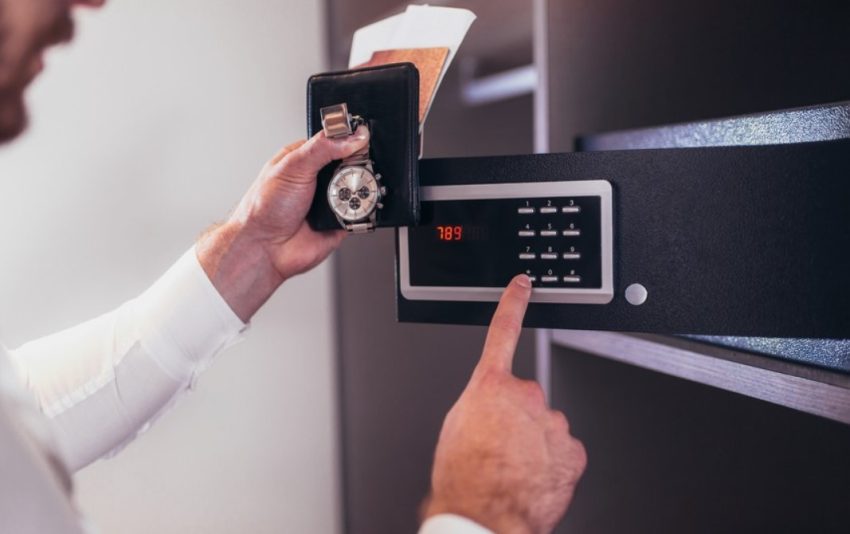A safe, fundamentally, is a secure storage unit used for safeguarding documents and valuables. These units come in various forms, including fireproof cabinets, boxes, or specially designed rooms in institutions like banks and businesses. Typically, a safe is a hollow cube or cylinder with one side removable or hinged to form a door. The body and door can be made of cast metal or molded plastic, and the design ensures robust protection against unauthorized access. Companies like Argus Security specialize in providing high-quality safes that meet modern security demands, offering advanced features to ensure the utmost protection.
Safes are differentiated by several parameters, including resistance to burglary, fire resistance, resistance to environmental influences, type of lock, and location. Understanding the evolution of safes provides insight into their crucial role in personal and institutional security throughout history.
Historical Background
The concept of safes dates back to ancient times. The ancestors of modern safes were chests and caskets, essential for wealthy individuals and high-ranking officials to store valuables, documents, and money. These chests often featured rudimentary locking mechanisms, with the earliest known examples dating back to the 13th century BC.
One notable historical figure associated with the development of locks and safes was King Louis XVI of France. His interest in lock-making led him to design unique locks and a personal safe, which he built into a wall to store his documents securely. This historical anecdote underscores the long-standing human desire to protect personal and valuable possessions.

Technological Advancements
The complexity of safes has significantly evolved over the centuries. In 1862, the creation of one of the most complex safes in history marked a significant technological milestone. This safe’s lock featured a combination system with over one million possible combinations, requiring over 2,000 years to decipher without the correct code. Such advancements highlight the increasing sophistication in safe design aimed at thwarting unauthorized access.
Modern safes are equipped with various locking mechanisms, including combination locks, electronic locks, biometric locks, and even time locks. Combination locks require a specific sequence of numbers to open, while electronic locks use a keypad for code entry. Biometric locks utilize fingerprint or retina scans, providing a highly secure access method. Time locks, often used in bank vaults, ensure that the safe can only be opened at certain times, adding another layer of security.
Unique and Noteworthy Safes
Several safes throughout history stand out for their unique features and high level of security. The Colosimo safe by German manufacturer Döttling is the smallest safe in the world, designed as an exact miniature replica of early 20th-century safes. Despite its small size, it incorporates 32 gold-plated gears and 16 locking bolts, making it a high-value collectible item priced at around $24,000.
On the opposite end of the spectrum, the most expensive and exclusive safe, known as “Narcissus,” was designed by the renowned fashion designer Karl Lagerfeld. This safe features a mirror surface and is produced in a limited edition of 30 units, each priced at $336,000. Its luxurious design reflects the intersection of security and opulence.
Another example of a unique safe is the Buben & Zörweg Illusion, a state-of-the-art safe that combines luxury with advanced security technology. It features a fingerprint scanner, remote control access, and a high-gloss finish, catering to high-end clients who desire both security and elegance.
Fictional and Real-World Legends
Fiction has also played a role in popularizing the concept of safes. The largest and most reliable fictional safe is owned by Scrooge McDuck, a character from a popular animated series. Despite numerous attempts to break into it using various outlandish methods, the safe remains impenetrable, emphasizing its supposed invincibility.
In the real world, Fort Knox in the United States is considered the most secure vault. Its formidable defenses include four walls with two connected to constant voltage, numerous CCTV cameras, an armed patrol, and granite walls 120 cm thick. The labyrinthine interior and the 22-ton door, which can withstand a nuclear blast, underscore Fort Knox’s reputation as an impenetrable fortress. The vault’s contents include approximately 5,000 tons of gold bars, safeguarded by complex password-protected systems.

Safes in Popular Culture and Unusual Uses
Safes have often found their way into popular culture and have been used in unexpected ways. For instance, the safes on the Titanic contained valuables worth $250 million, belonging to millionaire passengers en route to the New World. This illustrates the historical importance and value placed on secure storage, even during transatlantic voyages.
In a more unusual case, a Malaysian bank manager in Kuala Lumpur used a poisonous snake as an additional security measure inside his safe. This unconventional method resulted in tragic consequences when the secretary who opened the safe was fatally bitten, allowing the manager to steal $200,000. This story highlights the lengths to which individuals have gone to protect or, in this case, misuse safe technology.
In Munich, the famous Hofbräuhaus beer garden offers patrons a large safe with compartments for storing personal beer steins. These compartments, with locks passed down through generations, illustrate the diverse applications of safes beyond traditional security purposes. The safekeeping of personal items in such a communal and social setting underscores the cultural significance of security.
Modern-Day Safes
In contemporary society, safes remain an essential attribute for securing valuables. High-quality safes equipped with advanced security technology are available to meet the demands of modern users. In Dubai, for example, Argus Security offers luxury safes made in Italy, catering to the preferences of affluent clients. These safes are designed to protect against loss or theft, ensuring that cash, documents, watch collections, and jewelry are safely hidden from prying eyes.
Modern safes often feature fire and water resistance, protecting contents from natural disasters. Fire-resistant safes are designed to withstand high temperatures for a specified period, ensuring that documents and valuables remain intact during a fire. Water-resistant safes protect against flood damage, making them suitable for areas prone to natural calamities.
The integration of smart technology into safes has also become increasingly common. Smart safes can be connected to home security systems, allowing owners to monitor their safes remotely via smartphone apps. Features such as motion sensors, alarms, and notifications provide an additional layer of security, ensuring that owners are immediately alerted to any unauthorized access attempts.
Conclusion
From ancient chests to modern high-tech vaults, the evolution of safes reflects humanity’s ongoing quest to protect its most precious possessions. Whether for personal use or institutional security, safes continue to play a vital role in safeguarding valuables against theft, fire, and other threats. As technology advances, the design and functionality of safes will undoubtedly continue to evolve, ensuring that they remain a cornerstone of security in an increasingly complex world.
Safes are not merely physical objects but symbols of trust, security, and the lengths individuals and institutions will go to protect what they value most. From the intricate designs of historical locks to the advanced biometric systems of today, the story of safes is a testament to human ingenuity and the perpetual need for security. As we move forward, the integration of new technologies will likely lead to even more sophisticated and secure safes, continuing the legacy of protection and peace of mind that safes have provided for centuries.

I specialize in administrative technologies and am responsible for training other employees to use advanced systems and applications, including accounting software, mass communication procedures and organizational applications
